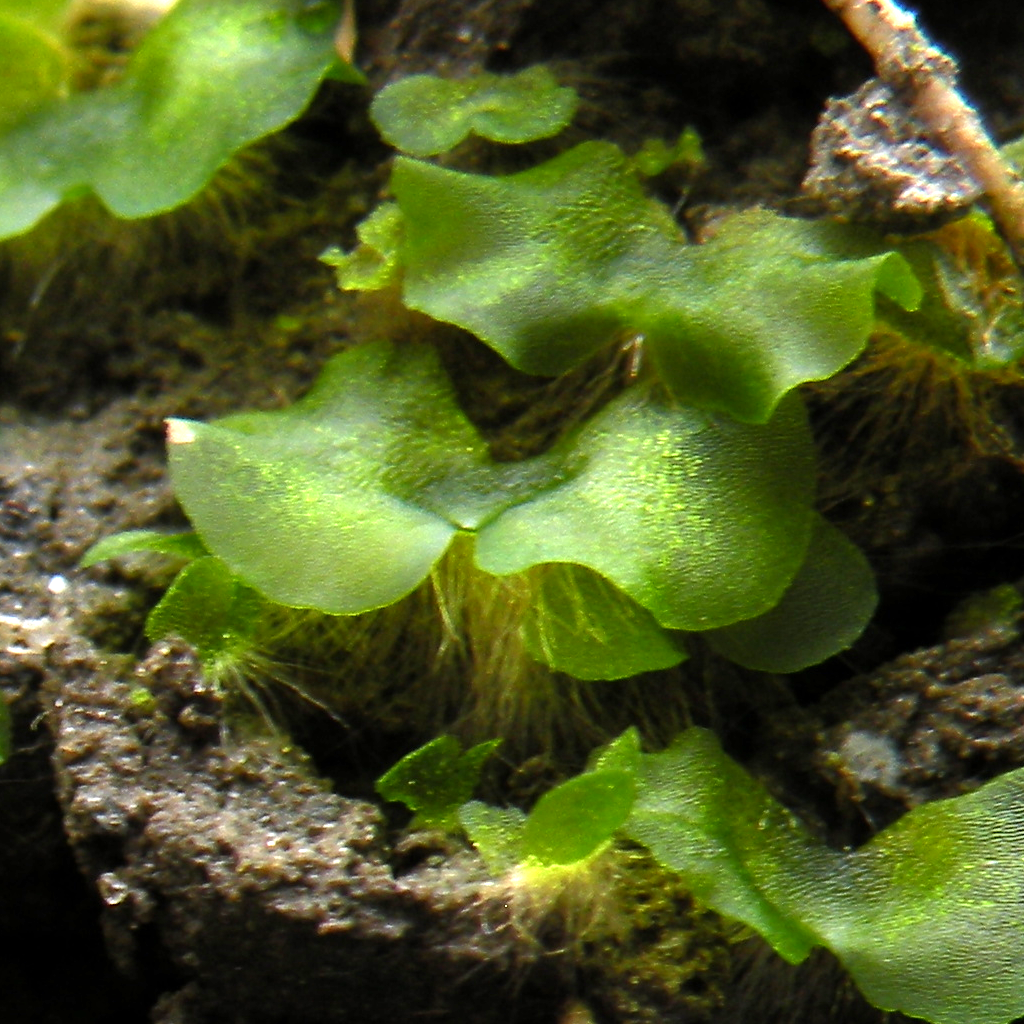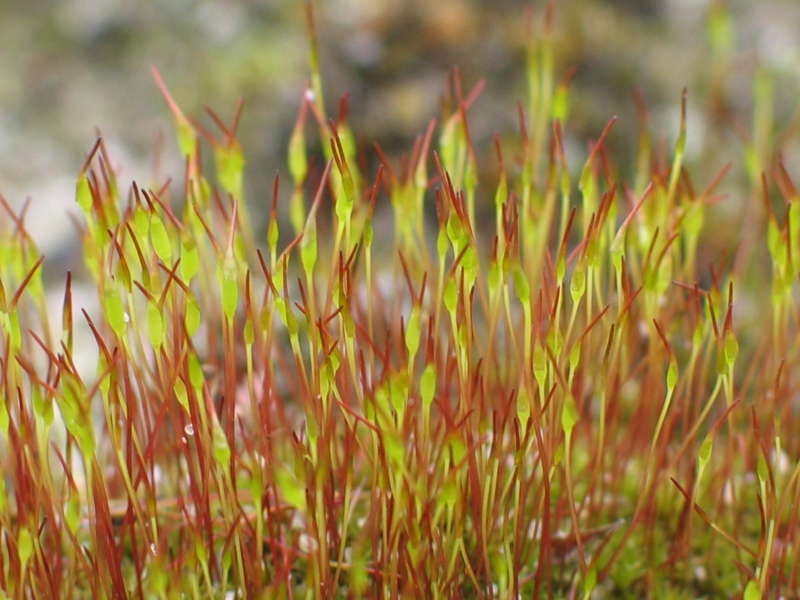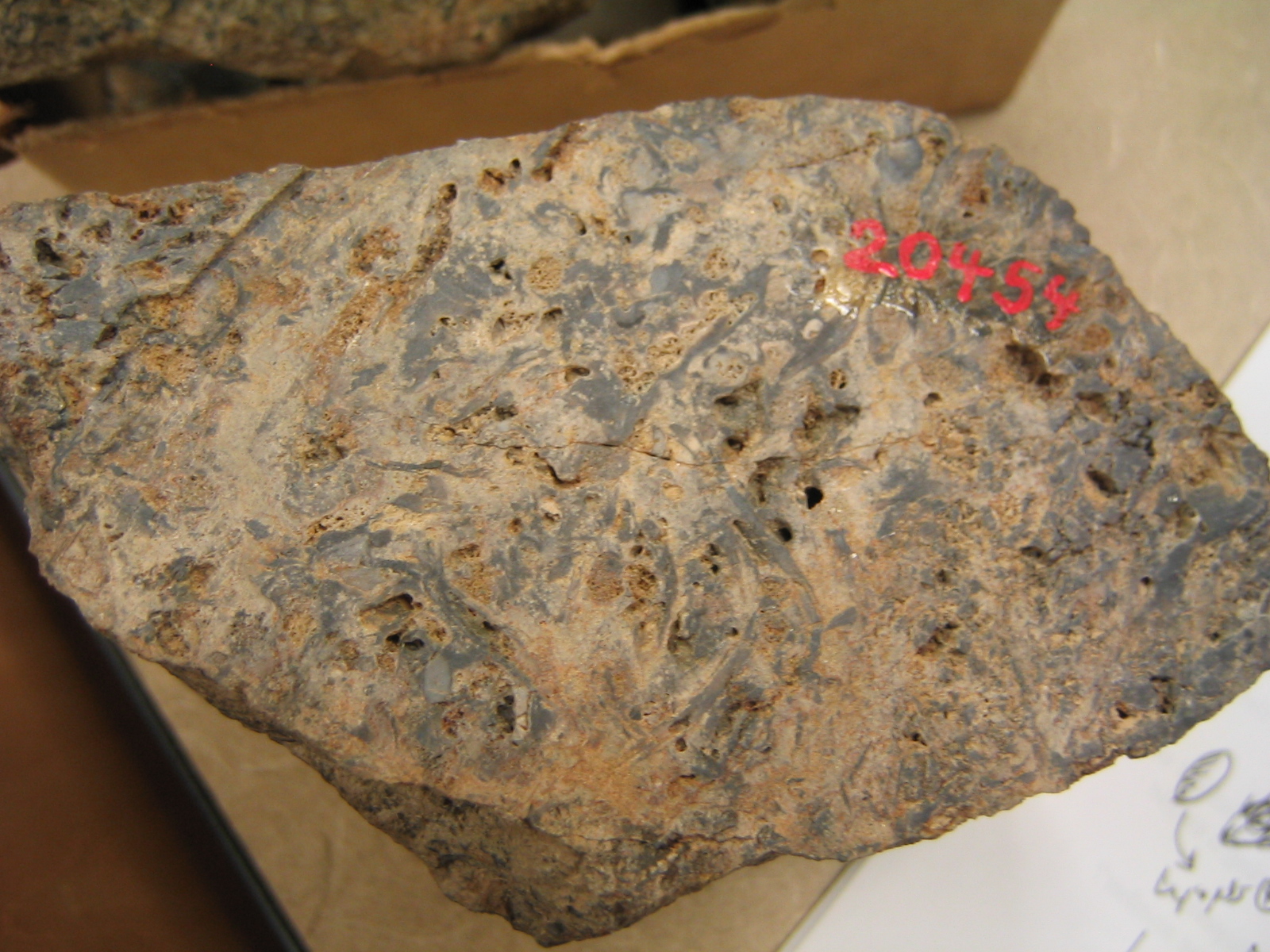|
Gametophyte
A gametophyte () is one of the two alternating multicellular phases in the life cycles of plants and algae. It is a haploid multicellular organism that develops from a haploid spore that has one set of chromosomes. The gametophyte is the sexual phase in the life cycle of plants and algae. It develops sex organs that produce gametes, haploid sex cells that participate in fertilization to form a diploid zygote which has a double set of chromosomes. Cell division of the zygote results in a new diploid multicellular organism, the second stage in the life cycle known as the sporophyte. The sporophyte can produce haploid spores by meiosis that on germination produce a new generation of gametophytes. Algae In some multicellular green algae ('' Ulva lactuca'' is one example), red algae and brown algae, sporophytes and gametophytes may be externally indistinguishable (isomorphic). In ''Ulva'', the gametes are isogamous, all of one size, shape and general morphology. Land plant ... [...More Info...] [...Related Items...] OR: [Wikipedia] [Google] [Baidu] |
Gametophyte2
A gametophyte () is one of the two alternation of generations, alternating multicellular organism, multicellular phases in the life cycles of plants and algae. It is a haploid multicellular organism that develops from a haploid spore that has one set of chromosomes. The gametophyte is the Sexual reproduction of plants, sexual phase in the life cycle of plants and algae. It develops sex organs that produce gametes, haploid sex cells that participate in fertilization to form a diploid zygote which has a double set of chromosomes. Cell division of the zygote results in a new diploid multicellular organism, the second stage in the life cycle known as the sporophyte. The sporophyte can produce haploid spores by meiosis that on germination produce a new generation of gametophytes. Algae In some multicellular green algae (''Ulva lactuca'' is one example), red algae and brown algae, sporophytes and gametophytes may be externally indistinguishable (isomorphic). In ''Ulva (genus), Ulva' ... [...More Info...] [...Related Items...] OR: [Wikipedia] [Google] [Baidu] |
Alternation Of Generations
Alternation of generations (also known as metagenesis or heterogenesis) is the predominant type of life cycle in plants and algae. In plants both phases are multicellular: the haploid sexual phase – the gametophyte – alternates with a diploid asexual phase – the sporophyte. A mature sporophyte produces haploid spores by meiosis, a process which reduces the number of chromosomes to half, from two sets to one. The resulting haploid spores germinate and grow into multicellular haploid gametophytes. At maturity, a gametophyte produces gametes by mitosis, the normal process of cell division in eukaryotes, which maintains the original number of chromosomes. Two haploid gametes (originating from different organisms of the same species or from the same organism) fuse to produce a diploid zygote, which divides repeatedly by mitosis, developing into a multicellular diploid sporophyte. This cycle, from gametophyte to sporophyte (or equally from sporophyte to gametophyte), is the way ... [...More Info...] [...Related Items...] OR: [Wikipedia] [Google] [Baidu] |
Sporophyte
A sporophyte () is one of the two alternation of generations, alternating multicellular organism, multicellular phases in the biological life cycle, life cycles of plants and algae. It is a diploid multicellular organism which produces asexual Spore, spores. This stage Alternation of generations, alternates with a multicellular haploid gametophyte phase. Life cycle The sporophyte develops from the zygote produced when a haploid egg cell is fertilized by a haploid sperm and each sporophyte cell therefore has a double set of chromosomes, one set from each parent. All Embryophyta, land plants, and most multicellular algae, have life cycles in which a multicellular diploid sporophyte phase alternates with a multicellular haploid gametophyte phase. In the Spermatophyte, seed plants, the largest groups of which are the gymnosperms (bare seeds) and angiosperms (fruiting plants), the sporophyte phase is more prominent than the gametophyte, and is the familiar green plant with its roots, ... [...More Info...] [...Related Items...] OR: [Wikipedia] [Google] [Baidu] |
Bryophyte
Bryophytes () are a group of embryophyte, land plants (embryophytes), sometimes treated as a taxonomic Division (taxonomy), division referred to as Bryophyta ''Sensu#Common qualifiers, sensu lato'', that contains three groups of non-vascular plant, non-vascular land plants: the Marchantiophyta, liverworts, hornworts, and mosses. In the Sensu#Common qualifiers, strict sense, the division Bryophyta consists of the mosses only. Bryophytes are characteristically limited in size and prefer moist habitats although some species can survive in drier environments. The bryophytes consist of about 20,000 plant species. Bryophytes produce enclosed reproductive structures (gametangia and sporangia), but they do not produce flowers or seeds. They reproduce sexually by spores and asexually by fragmentation or the production of Gemma (botany), gemmae. Though bryophytes were considered a paraphyletic group in recent years, almost all of the most recent phylogenetics, phylogenetic evidence support ... [...More Info...] [...Related Items...] OR: [Wikipedia] [Google] [Baidu] |
Sexual Reproduction Of Plants
Plant reproductive morphology is the study of the physical form and structure (the morphology) of those parts of plants directly or indirectly concerned with sexual reproduction. Among all living organisms, flowers, which are the reproductive structures of angiosperms, are the most varied physically and show a correspondingly great diversity in methods of reproduction. Plants that are not flowering plants (green algae, mosses, liverworts, hornworts, ferns and gymnosperms such as conifers) also have complex interplays between morphological adaptation and environmental factors in their sexual reproduction. The breeding system, or how the sperm from one plant fertilizes the ovum of another, depends on the reproductive morphology, and is the single most important determinant of the genetic structure of nonclonal plant populations. Christian Konrad Sprengel (1793) studied the reproduction of flowering plants and for the first time it was understood that the pollination process invo ... [...More Info...] [...Related Items...] OR: [Wikipedia] [Google] [Baidu] |
Embryophyte
The embryophytes () are a clade of plants, also known as Embryophyta (Plantae ''sensu strictissimo'') () or land plants. They are the most familiar group of photoautotrophs that make up the vegetation on Earth's dry lands and wetlands. Embryophytes have a common ancestor with green algae, having emerged within the Phragmoplastophyta clade of freshwater charophyte green algae as a sister taxon of Charophyceae, Coleochaetophyceae and Zygnematophyceae. Embryophytes consist of the bryophytes and the polysporangiophytes. Living embryophytes include hornworts, liverworts, mosses, lycophytes, ferns, gymnosperms and angiosperms (flowering plants). Embryophytes have diplobiontic life cycles. The embryophytes are informally called "land plants" because they thrive primarily in terrestrial habitats (despite some members having evolved secondarily to live once again in semiaquatic/ aquatic habitats), while the related green algae are primarily aquatic. Embryophytes are complex ... [...More Info...] [...Related Items...] OR: [Wikipedia] [Google] [Baidu] |
Hornwort
Hornworts are a group of non-vascular Embryophytes (land plants) constituting the division Anthocerotophyta (). The common name refers to the elongated horn-like structure, which is the sporophyte. As in mosses and liverworts, hornworts have a gametophyte-dominant life cycle, in which cells of the plant carry only a single set of genetic information; the flattened, green plant body of a hornwort is the gametophyte stage of the plant. Hornworts may be found worldwide, though they tend to grow only in places that are damp or humid. Some species grow in large numbers as tiny weeds in the soil of gardens and cultivated fields. Large tropical and sub-tropical species of ''Dendroceros'' may be found growing on the bark of trees. The total number of species is still uncertain. While there are more than 300 published species names, the actual number could be as low as 100–150 species. Description Like all bryophytes, the dominant life phase of a hornwort is the haploid gametophyt ... [...More Info...] [...Related Items...] OR: [Wikipedia] [Google] [Baidu] |
Fertilization
Fertilisation or fertilization (see American and British English spelling differences#-ise, -ize (-isation, -ization), spelling differences), also known as generative fertilisation, syngamy and impregnation, is the fusion of gametes to give rise to a zygote and initiate its development into a new individual organism or offspring. While processes such as insemination or pollination, which happen before the fusion of gametes, are also sometimes informally referred to as fertilisation, these are technically separate processes. The cycle of fertilisation and development of new individuals is called sexual reproduction. During double fertilisation in angiosperms, the haploid male gamete combines with two haploid polar nuclei to form a triploid primary endosperm nucleus by the process of vegetative fertilisation. History In antiquity, Aristotle conceived the formation of new individuals through fusion of male and female fluids, with form and function emerging gradually, in a mode c ... [...More Info...] [...Related Items...] OR: [Wikipedia] [Google] [Baidu] |
Spore
In biology, a spore is a unit of sexual reproduction, sexual (in fungi) or asexual reproduction that may be adapted for biological dispersal, dispersal and for survival, often for extended periods of time, in unfavourable conditions. Spores form part of the Biological life cycle, life cycles of many plants, algae, fungus, fungi and protozoa. They were thought to have appeared as early as the mid-late Ordovician period as an adaptation of early land plants. Bacterial spores are not part of a sexual cycle, but are resistant structures used for survival under unfavourable conditions. Myxozoan spores release amoeboid infectious germs ("amoebulae") into their hosts for parasitic infection, but also reproduce within the hosts through the pairing of two nuclei within the plasmodium, which develops from the amoebula. In plants, spores are usually haploid and unicellular and are produced by meiosis in the sporangium of a diploid sporophyte. In some rare cases, a diploid spore is also p ... [...More Info...] [...Related Items...] OR: [Wikipedia] [Google] [Baidu] |
Red Algae
Red algae, or Rhodophyta (, ; ), make up one of the oldest groups of eukaryotic algae. The Rhodophyta comprises one of the largest Phylum, phyla of algae, containing over 7,000 recognized species within over 900 Genus, genera amidst ongoing taxonomic revisions. The majority of species (6,793) are Florideophyceae, and mostly consist of multicellular, ocean, marine algae, including many notable seaweeds. Red algae are abundant in marine habitats. Approximately 5% of red algae species occur in freshwater environments, with greater concentrations in warmer areas. Except for two coastal cave dwelling species in the asexual class Cyanidiophyceae, no terrestrial species exist, which may be due to an evolutionary bottleneck in which the last common ancestor lost about 25% of its core genes and much of its evolutionary plasticity. Red algae form a distinct group characterized by eukaryotic cells without flagella and centrioles, chloroplasts without external endoplasmic reticulum or unstack ... [...More Info...] [...Related Items...] OR: [Wikipedia] [Google] [Baidu] |
Moss
Mosses are small, non-vascular plant, non-vascular flowerless plants in the taxonomic phylum, division Bryophyta (, ) ''sensu stricto''. Bryophyta (''sensu lato'', Wilhelm Philippe Schimper, Schimp. 1879) may also refer to the parent group bryophytes, which comprise Marchantiophyta, liverworts, mosses, and hornworts. Mosses typically form dense green clumps or mats, often in damp or shady locations. The individual plants are usually composed of simple leaf, leaves that are generally only one cell thick, attached to a plant stem, stem that may be branched or unbranched and has only a limited role in conducting water and nutrients. Although some species have conducting tissues, these are generally poorly developed and structurally different from similar tissue found in vascular plants. Mosses do not have seeds and after fertilisation develop sporophytes with unbranched stalks topped with single capsules containing sporangium, spores. They are typically tall, though some species ar ... [...More Info...] [...Related Items...] OR: [Wikipedia] [Google] [Baidu] |
Rhynie Chert
The Rhynie chert is a Lower Devonian Sedimentary rock, sedimentary deposit exhibiting extraordinary fossil detail or completeness (a Lagerstätte). It is exposed near the village of Rhynie, Aberdeenshire, Scotland; a second unit, the Windyfield chert, is located some 700 m away. The Rhynie chert contains exceptionally preserved plant, fungus, lichen and animal material preserved in place by an overlying Volcanic rock, volcanic deposit. The bulk of the Devonian fossil bed consists of primitive plants (which had xylem, water-conducting cells and spores, sporangia, but no true leaf, leaves), along with arthropods, lichens, algae and fungi. This fossil bed is remarkable for two reasons. First, the age of the site (Pragian, Early Devonian, formed about ) places it at an early stage in the colonisation of land. Second, these cherts are famous for their exceptional state of ultrastructure, ultrastructural preservation, with individual cell walls easily visible in polished specimen ... [...More Info...] [...Related Items...] OR: [Wikipedia] [Google] [Baidu] |











